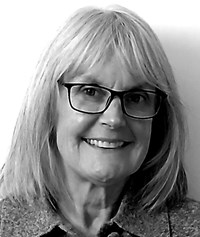
Journal Reviews
Airway first in patients with facial trauma
Anyone that has ever been on an ATLS or indeed any other trauma course will be well indoctrinated with the principles of ABC. Securing the airway is of paramount importance; but what to do if the anatomy is altered or...
Contemporary UK experience of oropharyngeal transoral laser microsurgery
It is well recognised that the current emergence of HPV-positive oropharyngeal squamous cell carcinoma (OPSCC) as a distinct disease entity requires a fresh look at standard treatment modalities that are based on chemoradiotherapy for stage III/IVa OPSCC. The Newcastle experience...
Hearing aids in children for language development
This article summarises the current evidence and a recent study examining the factors influencing language development in children fitted with hearing aids in order to aid clinical decision making. The aims were to examine amplification factors that could be targeted...
Antiseptics to combat otorrhea in the era of antibiotic resistance
This nice scientific paper pits various antiseptic solutions against each other to determine which has the most bactericidal properties. Five different antiseptics were applied to MRSA and quinolone-resistant pseudomonas species, which are both difficult to treat with conventional ototoxic medications....
Preoperative imaging for thyroid cancer according to 2015 ATA guidelines
The 2015 American Thyroid Association (ATA) management guidelines for adult patients with thyroid nodules and differentiated thyroid cancer suggest that thyroid sonography with survey of the cervical lymph nodes should be performed in all patients with known or suspected thyroid...
CAD/CAM assisted mandibular reconstruction or freestyle?
The gold standard for the reconstruction of the mandible is a free bone flap and the fibula is commonly used. The fibula is a straight bone and presents considerations and difficulties in the formation of a U-shaped neo-mandible. Computer aided...
Can junior doctors provide immediate help in airway and other ENT emergencies?
In the present trends for centralisation of ENT emergency services, availability of immediate middle grade or senior help in acute ENT emergencies does not always exist on site and hence the role of junior doctors in handling this is enhanced...
Factors affecting compliance of follow-up of patients with chronic otitis media
Patients with retraction pockets and small cholesteatomas need good surveillance as well as those surgically treated for cholesteatomas. This is particularly important in closed techniques where a second look or diffusion weighted MRI can pick up any recurrence or residual...
Using cVEMPs to distinguish between vestibular migraine and from Ménière’s
Vestibular migraine (VM) and Ménière’s disease (MD) could overlap or mimic each other. Since the use of cVEMPs became routine, attempts have been made by researchers to explore its clinical utility in these two conditions. In this prospective study, the...
Persistent dysphonia due to cricothyroid muscle dystonia – should we be requesting laryngeal EMGs for non-resolving ‘functional’ dysphonia?
This article is an interesting report of a case of persistent voice problems affecting a 43-year-old physician that significantly compromised her ability to converse and communicate at work. Specifically, she had a fluctuating voice quality that would ‘choke off’, combined...
High definition tractography to identify cranial nerves
It has always been challenging to visualise cranial nerves on traditional imaging as the cranial nerves have a fine structure and complex anatomy. This is especially true regarding the cochlear nerve. In congenitally hearing impaired children, the visualisation of the...
Do endonasal approaches for meningiomas have more CSF leaks?
Rarely, patients presenting to the ENT surgeon with anosmia may have an anterior skull base neoplasm such as a meningioma. Historically, the traditional approaches have focused on several transcranial, external routes, including the pterional craniotomy, and the subfrontal craniotomy. The...
















